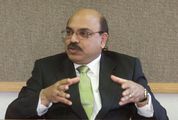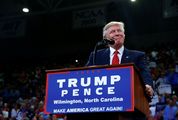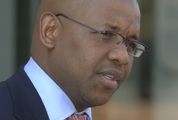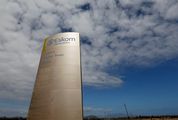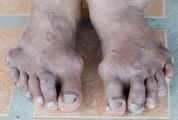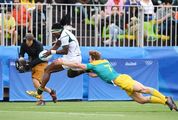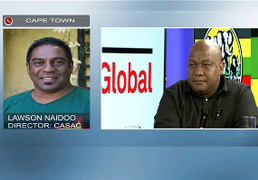THE saintly qualities of Nelson Mandela — forgiveness, reconciliation between oppressor and oppressed, and unity across the race divide — are so often viewed by the world in a miraculous light.
They are at the heart of the world’s universal admiration and embracing of Mandela as an iconic and unifying figure in history. But at the foundation of Mandela’s saintliness was neither a miracle nor religious zeal but a grounded political and practical idea that nonracialism — equality between the races, interracial solidarity and mutual tolerance and respect — was the only viable solution to the South African question.
This realisation, and Mandela and his peers’ practical commitment to the principle of nonracialism, is of enormous significance to the way the struggle for liberation unfolded and the form the transition to democracy took.
That the idea of nonracialism became the lodestar of what was an African nationalist movement, from the 1950s through to the transition from apartheid in the 1990s, holds in large part the explanation of how, in the eyes of the world, the miracle of the rainbow appeared to suddenly arrive.
However, Mandela’s peers agree that he gave the nonracialism idea a uniquely personal and insightful interpretation. From his embracing of Betsie Verwoerd, the widow of the architect of "grand apartheid" to his appearance on the field at the 1995 Rugby World Cup — against the counsel of his advisers — Mandela made the principle of nonracialism real in a way that no other South African imagined could or should be done.
Why it matters to think about this now, is that Mandela’s nonracialism, if it is to endure, needs to be understood for what it was in its historical context: not an accident or a miracle but a practical choice for a desirable future. As has been exhaustively documented by the histories and biographies of the times, nonracialism was not the point of view at which Mr Mandela naturally arrived when first becoming politically active in the African National Congress (ANC).
In the 1940s as a leader of the ANC Youth League, Mandela was very suspicious of other race groups and did not believe that they should be involved in the liberation struggle. With peers in the league and under the leadership of Anton Lembede, Mandela himself went so far as to physically break up meetings at which the ANC shared a platform with the Transvaal Indian Congress and the South African Communist Party (SACP).
Ben Turok, a member of the white Congress of Democrats and later a treason trialist alongside Mandela, says "as a young man, Madiba was a pure African nationalist; you might even say a chauvinist". His life-long friend and another co-accused in the t reason and Rivonia trials, Ahmed Kathrada, says the league and Mandela "were exclusivist".
"They believed that the struggle must be fought by Africans alone and not in co-operation with any other liberation organisations. When, in 1950, we (the Transvaal Indian Congress) were organising a strike over the Suppression of Communism Act along with the SACP and the ANC, Madiba and the youth league opposed the strike to the extent that they broke up our meeting," he says.
It was after the enormous success of the 1950 strike that Mandela took his first steps towards "co-operation," says Mr Kathrada, joining the joint meetings to deal with the aftermath, which included the death of 18 people during the action. Mandela’s view on nonracialism was changed "through the practical experience" of joint campaigns, say his peers, and gradual persuasion that "the narrow chauvinism of African nationalism was a dead-end," says Prof Turok.
The Defiance Campaign of 1952, when leaders of the racially separate liberation organisations together publicly defied apartheid laws and were arrested, embedded the idea of nonracialism among the majority of both their leadership and membership. By the time these leaders came together to draft the Freedom Charter for the Congress of the People in 1955, the opening lines — "South Africa belongs to all who live in it, black and white" — embodied how far the ANC as a whole, and Mr Mandela himself, had come in their political evolution.
In the mass campaign to draw up the Freedom Charter and to convene the Congress of the People, the joint activities of African, Indian, coloured and white activists on public platforms, a nonracial movement was built through an intense and common experience. The conviction was further cemented by the Treason Trial in 1956 "when suddenly 156 of us were sitting in the dock, without any separation between us, in unity, facing the death sentence," says Prof Turok.
That nonracialism endured through the internal debates in the ANC and the breakaway by African nationalists in 1959 to form the Pan Africanist Congress, into the years of exile, through the birth of the Black Consciousness Movement in South Africa and the Black Power movement abroad is a testament to the binding strength of these experiences.
Part philosophical — advanced as a political principle necessary to the ultimate creation of a nonracial future — and part practical — alliances with other racial groups strengthened the liberation movement — non racialism became embedded in the ANC’s particular brand of African nationalism.
Within this, says Mr Kathrada, Mandela used his "own style". "It is important to accept that Madiba’s embrace of nonracialism was not an individual decision: he was carrying out the policy of the organisation. But the way he did it was a matter of style."
Now, after 20 years of democracy, when much of public debate has descended into acrimony over policies designed to build nonracial inclusivity, the roots of nonracialism and Mandela’s "stylish" interpretation provide some much-needed perspective.
Says Prof Turok: "With Madiba it wasn’t just that he was for reconciliation but it was also a recognition that we have to work together; that there is no other way. But when it came to the smaller, symbolic things, Madiba saw their value more clearly than the rest of us."
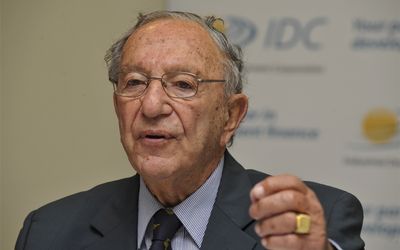
ANC MP Ben Turok. Picture: FINANCIAL MAIL
THE saintly qualities of Nelson Mandela — forgiveness, reconciliation between oppressor and oppressed, and unity across the race divide — are so often viewed by the world in a miraculous light.
They are at the heart of the world’s universal admiration and embracing of Mandela as an iconic and unifying figure in history. But at the foundation of Mandela’s saintliness was neither a miracle nor religious zeal but a grounded political and practical idea that nonracialism — equality between the races, interracial solidarity and mutual tolerance and respect — was the only viable solution to the South African question.
This realisation, and Mandela and his peers’ practical commitment to the principle of nonracialism, is of enormous significance to the way the struggle for liberation unfolded and the form the transition to democracy took.
That the idea of nonracialism became the lodestar of what was an African nationalist movement, from the 1950s through to the transition from apartheid in the 1990s, holds in large part the explanation of how, in the eyes of the world, the miracle of the rainbow appeared to suddenly arrive.
However, Mandela’s peers agree that he gave the nonracialism idea a uniquely personal and insightful interpretation. From his embracing of Betsie Verwoerd, the widow of the architect of "grand apartheid" to his appearance on the field at the 1995 Rugby World Cup — against the counsel of his advisers — Mandela made the principle of nonracialism real in a way that no other South African imagined could or should be done.
Why it matters to think about this now, is that Mandela’s nonracialism, if it is to endure, needs to be understood for what it was in its historical context: not an accident or a miracle but a practical choice for a desirable future. As has been exhaustively documented by the histories and biographies of the times, nonracialism was not the point of view at which Mr Mandela naturally arrived when first becoming politically active in the African National Congress (ANC).
In the 1940s as a leader of the ANC Youth League, Mandela was very suspicious of other race groups and did not believe that they should be involved in the liberation struggle. With peers in the league and under the leadership of Anton Lembede, Mandela himself went so far as to physically break up meetings at which the ANC shared a platform with the Transvaal Indian Congress and the South African Communist Party (SACP).
Ben Turok, a member of the white Congress of Democrats and later a treason trialist alongside Mandela, says "as a young man, Madiba was a pure African nationalist; you might even say a chauvinist". His life-long friend and another co-accused in the t reason and Rivonia trials, Ahmed Kathrada, says the league and Mandela "were exclusivist".
"They believed that the struggle must be fought by Africans alone and not in co-operation with any other liberation organisations. When, in 1950, we (the Transvaal Indian Congress) were organising a strike over the Suppression of Communism Act along with the SACP and the ANC, Madiba and the youth league opposed the strike to the extent that they broke up our meeting," he says.
It was after the enormous success of the 1950 strike that Mandela took his first steps towards "co-operation," says Mr Kathrada, joining the joint meetings to deal with the aftermath, which included the death of 18 people during the action. Mandela’s view on nonracialism was changed "through the practical experience" of joint campaigns, say his peers, and gradual persuasion that "the narrow chauvinism of African nationalism was a dead-end," says Prof Turok.
The Defiance Campaign of 1952, when leaders of the racially separate liberation organisations together publicly defied apartheid laws and were arrested, embedded the idea of nonracialism among the majority of both their leadership and membership. By the time these leaders came together to draft the Freedom Charter for the Congress of the People in 1955, the opening lines — "South Africa belongs to all who live in it, black and white" — embodied how far the ANC as a whole, and Mr Mandela himself, had come in their political evolution.
In the mass campaign to draw up the Freedom Charter and to convene the Congress of the People, the joint activities of African, Indian, coloured and white activists on public platforms, a nonracial movement was built through an intense and common experience. The conviction was further cemented by the Treason Trial in 1956 "when suddenly 156 of us were sitting in the dock, without any separation between us, in unity, facing the death sentence," says Prof Turok.
That nonracialism endured through the internal debates in the ANC and the breakaway by African nationalists in 1959 to form the Pan Africanist Congress, into the years of exile, through the birth of the Black Consciousness Movement in South Africa and the Black Power movement abroad is a testament to the binding strength of these experiences.
Part philosophical — advanced as a political principle necessary to the ultimate creation of a nonracial future — and part practical — alliances with other racial groups strengthened the liberation movement — non racialism became embedded in the ANC’s particular brand of African nationalism.
Within this, says Mr Kathrada, Mandela used his "own style". "It is important to accept that Madiba’s embrace of nonracialism was not an individual decision: he was carrying out the policy of the organisation. But the way he did it was a matter of style."
Now, after 20 years of democracy, when much of public debate has descended into acrimony over policies designed to build nonracial inclusivity, the roots of nonracialism and Mandela’s "stylish" interpretation provide some much-needed perspective.
Says Prof Turok: "With Madiba it wasn’t just that he was for reconciliation but it was also a recognition that we have to work together; that there is no other way. But when it came to the smaller, symbolic things, Madiba saw their value more clearly than the rest of us."


